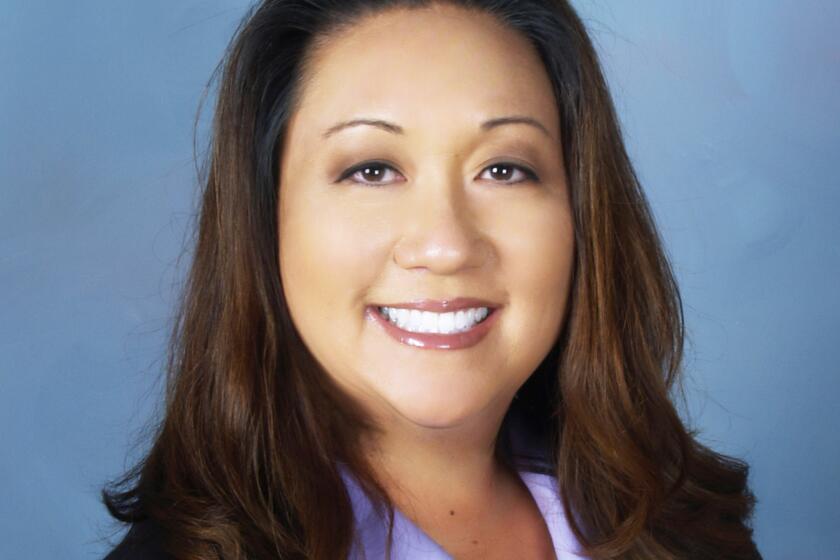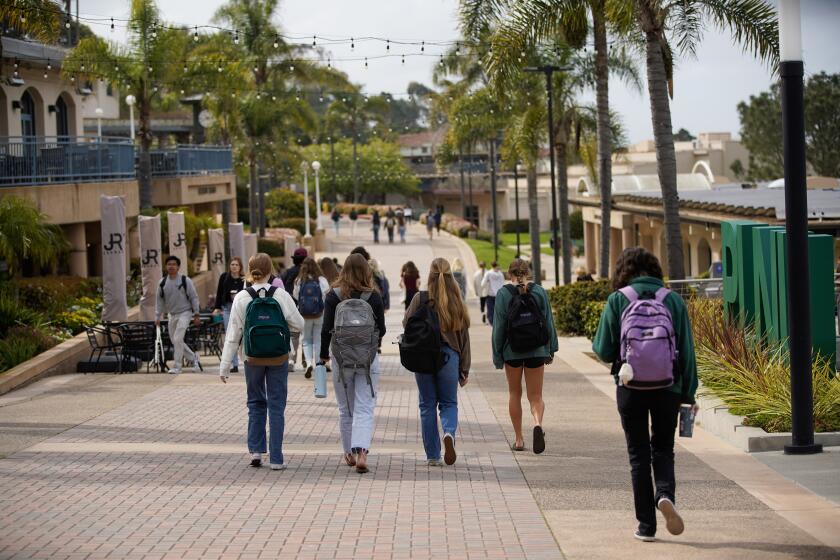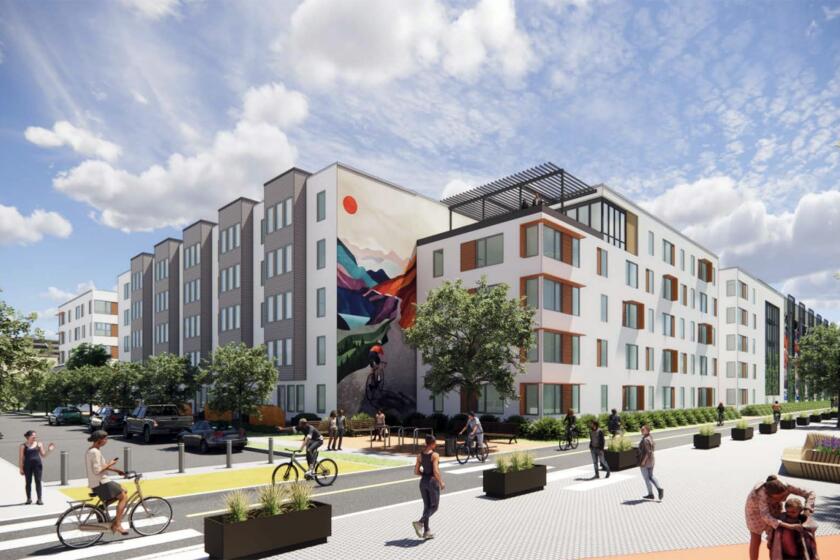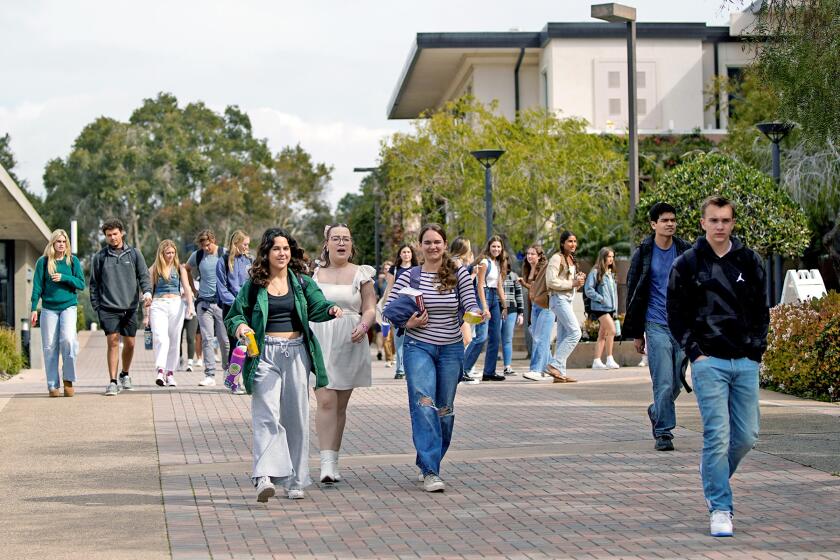Berkeley vs. Berkeley is a fight over the California Dream

Lawmakers are confronting the limits of California’s promise, as growth collides with the state’s ability to sustainably house and educate its 40 million people
BERKELEY, Calif. — Kiara Bragg has spent years imagining herself at the University of California, Berkeley — walking through Sproul Plaza, navigating crowds of students, becoming the first in her working-class family to graduate from her state’s iconic flagship school.
Phil Bokovoy imagines, too. In his mind’s eye, the city where he moved in 1983 as a graduate student is a college town where, if he had his way, the Craftsman homes would still be affordable for professors and campus life — the packed living quarters, the beer-soaked parties — would not disrupt surrounding neighborhoods.
A reasonably priced education at a world-class public university. A single-family house in a neighborhood that is clean and peaceful. For generations, these have been pillars of the California dream.
Now an epic clash between the two ideals is forcing state lawmakers to confront the limits of California’s promise, as growth collides with the state’s ability to sustainably house and educate its 40 million people.
Bristling at pressure to make room for escalating numbers of students, longtime Berkeley residents have leveraged state environmental law to accuse the oldest University of California campus of essentially polluting neighborhoods by admitting more students than the city can handle.
The case is ongoing but plaintiffs recently won a court order to freeze the university’s enrollment at 2020 levels, potentially forcing more than 2,500 incoming students to defer enrollment, take a semester remotely, lose their slot or consider another campus.
Now, with admissions envelopes due out in weeks, state lawmakers are mulling short-term remedies to the court’s order and longer-term responses to the possibility that similar lawsuits could sharply restrict enrollment.
Some policymakers see no way out except through so much remote instruction that, over time, it could severely damage the brand of the University of California. Others fear an enrollment squeeze so tight that it will crowd out racial diversity or out-of-state students. Still others want to exempt campus housing from California’s environmental laws, which are famously complex and contentious.
The dispute in a famed liberal bastion has aroused passions, with some asserting that the university has finally been called to task for driving legions of students into neighborhoods not built to hold them. Others liken the lawsuit to generational theft by the older, whiter baby boomers who dominate the propertied classes in college communities throughout California.
“It’s like, ‘I got my piece of the pie, too bad for you,’ ” said Riya Master, a senior at Berkeley who is majoring in integrative biology and is a vice president of the campus’s student governing body.
George Kieffer, a Los Angeles civic leader and former chair of the University of California Board of Regents, said the conflict was multifaceted.
“The residents want their community to stay the same,” he said. “The parents want their students to get into the UC. The legislators want to respond to constituent needs. And then you have California law, which people have learned to use over the years to satisfy their interests.
“All good motives. And they’re all competing. In an increasingly crowded place.”
California guarantees a subsidized college education to the top 12.5% of high school graduates in the state. And its sprawling network of campuses — community colleges, California State University and the 10-campus University of California — enrolls more than 2.5 million students altogether.
But competition remains intense, particularly at marquee campuses such as Los Angeles, Santa Barbara, San Diego and Berkeley. Demand skyrocketed during the 2008 recession as in-state students flocked to the discounted tuition and the campuses sought to increase lucrative out-of-state enrollment.
Since then, legislators have exerted relentless political pressure on the university to add in-state students. Since 2011, overall system enrollment, which now stands at about 300,000, has grown by more than 63,000 students, enough to populate an 11th campus.
“Everyone has a kid, a grandchild, a nephew, a niece, a neighbor who essentially has perfect grades and a great SAT score and they didn’t get in to the campus where they want to get in,” said Kevin McCarty, a state legislator in Sacramento who chairs the Assembly subcommittee overseeing education budgets. Before the court order, the Legislature and Gov. Gavin Newsom called for yet another 7,000 or more California students to be added this fall.
Housing has not kept up, for the students or for other Californians. The state’s median home price, at $800,000, is more than twice the national figure, the result of a housing shortage that dates to the 1970s.
Over the past decade, the state has added a little more than three times as many people as housing units and is far below the national average in housing units per capita, according to an analysis from the Public Policy Institute of California. Planners and economists have for decades been warning the state that until supply meets demand, its housing problems will worsen. But until recently, California cities and neighborhood groups have steadfastly resisted this advice by using a mix of regulations and environmental lawsuits that kill and shrink new projects, or drag them out for years.
In response, the Legislature has passed a flurry of laws that increase how much housing cities have to plan for and make it harder for them to oppose new development. Legislators like McCarty have made more state money available for campus housing projects, and the University of California has started several housing initiatives.
But while lawmakers have sought a dizzying array of carve-outs, they have assiduously avoided calls to overhaul the landmark law most frequently weaponized to block new construction: the California Environmental Quality Act.
Also known as CEQA, the act was passed more than 50 years ago to prevent developers from ravaging the scenic state’s natural resources and wildlife. When the nonprofit Save Berkeley’s Neighborhoods sued the university in 2018, it argued that the university had failed to meet CEQA requirements to sufficiently analyze the impact of the additional enrollment.
“All we have ever wanted was a legally binding commitment that they add housing before they add more students,” said Bokovoy, the president of the nonprofit and a former investment banker with a house near the campus that is worth an estimated $1.5 million. “This is about preserving Berkeley’s culture and diversity.”
The University of California system has on-campus beds for about 106,000 students, leaving roughly 2 out of 3 to compete for off-campus housing in some of the nation’s most expensive housing markets. In Berkeley, the university houses about 22% of its undergraduates, fewer than any other campus in the system.
Even though students make up more than a quarter of Berkeley’s population, the city, limited by its urban locale and attached to its low-rise aesthetic, has until recent years resisted development. Rent for a two-bedroom apartment runs about $4,000 monthly “and that’s for one that isn’t even nice,” said Master, the student government officer.
In 2005, the university projected that enrollment would be 33,450 by 2020, a number that became the basis for a long-range plan for developing the campus. But in 2017, Save Berkeley’s Neighborhoods discovered that enrollment had already outstripped that estimate by 30%.
After the university announced a plan to convert an acre of parking into new academic space and faculty and graduate housing, Bokovoy’s group sued again, this time with the City of Berkeley. They argued that the university’s environmental impact report — which found that the additional students had no significant impacts — was inadequate.
Together, the lawsuits became the basis of a package of complex litigation over whether the university had adequately studied and mitigated the impact of its entire enrollment. Last summer, a Superior Court issued an unusual order that rolled back and capped the university’s enrollment at its 2020-21 level of 42,357 students until the school significantly expanded the environment study in its long-range growth plan.
The decision still could be reversed, but because of the order — which was left in place by the California Supreme Court last week — the university had to cut the number of students coming to campus in the fall.
The university said it would reduce in-person fall enrollment by 2,629 students, largely by enrolling more than 1,000 incoming freshmen remotely with the understanding that they would move onto campus in January when graduating students free up some housing slots. The transfer of hundreds of students will be delayed and some students, mostly in graduate programs, will simply not be offered admission.
The continuing fight is sowing angst. Bragg, 20, said she had been nervously checking her phone for email updates ever since she received the enrollment freeze notice.
A first-generation college student, she said she had yearned to study at the University of California, Berkeley, since her early teens and has worked a full-time job to pay for the community college credits necessary to apply there.
If offered a spot as an online student, she said, she would likely accept it. Still, so much of what she has dreamed about over the years has involved exposure to peers far from her home in the desert exurbs of Riverside County.
Not long ago, she said, she visited the Berkeley campus and soaked in the culture so familiar to Californians — the way alumni call the school “Cal” rather than “UC Berkeley,” the way students rushing across campus walkways avoid stepping on the Berkeley seal lest it hex their chance at a 4.0 grade-point average.
“I felt like I was just a student there,” she said. “I pictured myself there, one of them.”
This article originally appeared in The New York Times.
Copyright: © 2022 The New York Times Company
Get Essential San Diego, weekday mornings
Get top headlines from the Union-Tribune in your inbox weekday mornings, including top news, local, sports, business, entertainment and opinion.
You may occasionally receive promotional content from the San Diego Union-Tribune.



